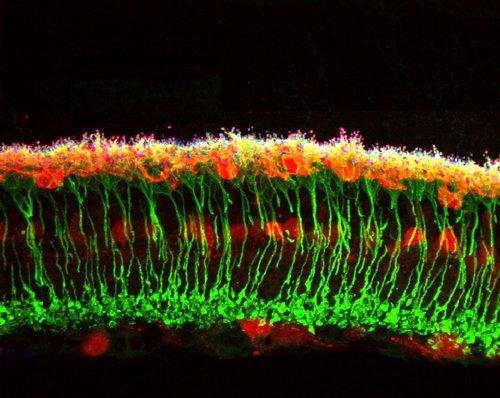Can a neuron change its stars?
The Samuel lab uses innovative genetic, computational, and imaging tools to understand how molecules control nervous system development and resiliency.
We pursue these goals in three research areas:
- Determining how genes can manipulated to preserve neurons and promote their function in the context of disease.
- Deciphering molecular pathways that generate and wire neural circuits in development.
- Developing new methods to map the genetic landscape responsible for neural regulation using advanced technology.
Disease

The Samuel lab aims to decipher protective neural pathways in diverse neural diseases by mapping the structural, functional, and molecular landscapes of neural resiliency. We also partner with the International Mouse Phenotyping Consortium to study rare genetic causes of neural disease to better understand how and why these diseases occur.
Although neural diseases have diverse causes, they converge on central targets—neurons and their synapses. Yet, in advanced neurodegenerative disease, some cells and synapses resist degradation even while their neighbors succumb. We hypothesize that clues to preventing neural decline lie in these resilient neurons and the molecules they express. To decipher these protective neural pathways, we aim to comprehensively map the structural, functional, and molecular landscapes of neural resiliency across all major neuron types within a circuit. We expect that such studies will broadly define the compendium of neural regulatory molecules, and link molecules to function to inform potential therapies.
Development

The Samuel lab is applying precise, neuron-specific genetic tools to map the molecules that control how neurons develop and connect.
We know little about how diverse neurons make fate and connectivity decisions and even less about the subcellular processes that refine them. To study these events, we focus our analysis a process called synaptic layering. During this process, neurites grow into a target area and then restrict their arbors to just a few of the synaptic layers that they encounter. This specificity is an integral process as it occurs in many species, is present in multiple brain areas, and is a central feature of nervous system connectivity. Evidence suggests that a cell-specific molecular code governs synaptic layering via partner choice and refinement. Deciphering this code is a central goal of our group. To achieve this, we use targeted gain and loss of function approaches as well as unbiased screening paradigms to decode synaptic specificity.
Technology

The Samuel lab brings a positive and creative force to problem solving. We tackle challenges by collaborating to develop new approaches to compelling questions. These include new technologies to see beyond the diffraction limit of light and to molecularly query single neurons and synapses.
We are developing new approaches to visualize neural development and resiliency in vivo, resulting in some of the first high-resolution views into this process. These methods rely on 3D high-resolution Stochastic Optical Reconstruction Microscopy (STORM) and exchange Point Accumulation for Imaging in Nanoscale Topography (PAINT) to achieve 3D reconstruction with 20-50nm resolution (i.e., beyond the diffraction). These methods can be multiplexed to enable simultaneous imaging of whole neurons, their synapses, and numerous molecules within neurons and their neighbors.








